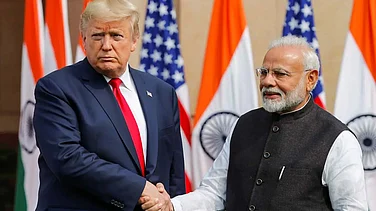India is reportedly in talks with US-based tech giant Nvidia to source graphic processing units (GPUs) from the US. The country aims to offer these GPUs to start-ups, researchers, and academic institutions at a subsidized rate below Rs 10,000, as per a report by the Economic Times.
As per the Economic Times report, the plan is in an initial stage now and will be completed only after the ongoing Lok Sabha elections. India is thinking of two possible ways to provide GPUs to companies: one is where the IT ministry will take the GPUs on rent from Nvidia and then sublet them. The other is where a marketplace model will be set up, from which companies can directly lend GPUs from Nvidia. Following this, the government will give these companies incentives under schemes like the production-linked incentive (PLI) schemes.
Before delving any further, let's understand what a GPU is.
What are GPUs?
A GPU is a hardware component capable of executing rapid mathematical computations. Tasks such as graphics rendering, machine learning (ML), and video editing involve processing extensive datasets using similar mathematical operations.
The design of a GPU enables it to concurrently perform these operations on multiple data values, thereby enhancing its efficiency in handling compute-intensive tasks. GPUs can be used in a wide range of activities, including research, defense, and compute-intensive applications.
With the expansion of artificial intelligence, the demand for GPUs has increased. While initially developed to render graphics in video games, GPUs are being used in AI because they can perform various operations simultaneously. Simultaneously, it can also be used for training AI and deep learning models.
Where does India stand with regards to GPU infrastructure?
While India has more than 100 generative start-ups, its computing capacity is low. Nvidia Asia South MD Vishal Dhupar recently said at the StartUp Mahakumbh that the country’s contribution towards computing infrastructure is less than 2 percent of global capacity. He said, “India today is approximately sub-2 percent as compared to the US, and China combined is closer to 58–59 percent.”
Similarly, Shridhar Garge, Head, Strategy, Planning & Programs, NVIDIA, told the Economic Times in 2023, “India's largest cluster of graphics processing units (GPU) was about 2,000–2,500 as compared with 20,000 plus in the US.”
A report by Nasscom titled ‘Generative AI Startup Landscape in India: A 2023 Perspective’ says that lack of high-quality training data, funding, and compute infrastructure are the three setbacks that generative AI start-ups face.
The report further states that between 2021 and 2023, the number of AI start-ups in the country doubled. Further, nearly 70 per cent of private investments flowed into the Gen AI space in 2022.
Similarly, the Hurun Global Unicorn Index 2024 recently talked about the rise of Krutrim, the country’s first AI unicorn. While its one in India, the USA and China had 60 and 37 AI unicorns, respectively, showing a significant gap.
“This situation presents a crucial juncture for India. Failure to seize this moment risks India falling further behind the US and China in AI, new energy, semiconductors, and potentially aerospace—a sector likely to rely on domestic innovation due to security considerations,” said Anas Rahman Junaid, founder and chief researcher of Hurun India.
The government push
With AI being a constant in life, it also becomes important to have an infrastructure where AI start-ups can prosper. To fill this gap, in March, the cabinet approved the Rs 10,372-crore India AI mission, which intends to create a compute facility. Through a private-public partnership, the company will deploy 10,000 GPUs.
Minister of State Rajeev Chandrasekhar said, “The quantum of funds is more than Rs 10,000 crore. It will be presented to the cabinet for approval soon. It will include setting up graphic processing units (GPUs) in PPP mode with data centers in the private space and public data centers under C-DAC (Centre for Development of Advanced Computing)." With the government focusing heavily on GPUs, Nvidia seems like a natural choice for them.
Nvidia, the largest provider of graphic processing units (GPUs) globally, plays a crucial role in driving AI advancements. These units are known for their high cost, with the company's latest model reportedly priced at $40,000 per unit (approximately Rs 33.5 lakh). With government support, this deal can be a game changer for AI start-ups.






























